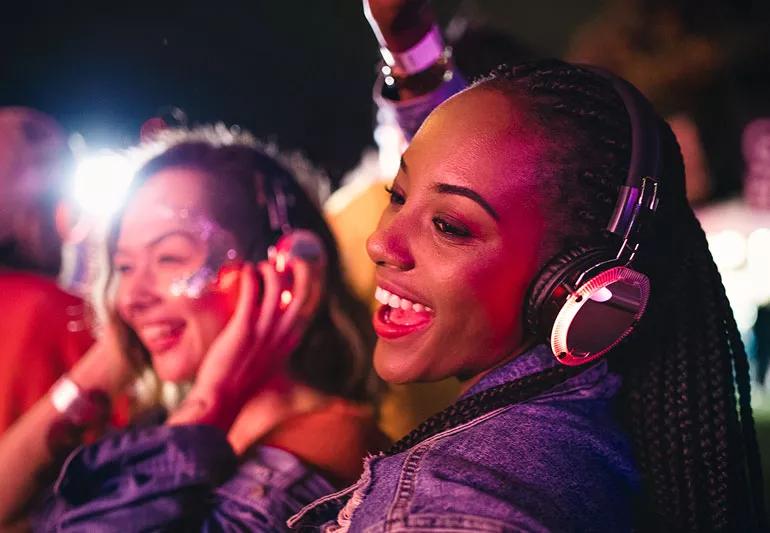Damage accumulates over time

Earplugs aren’t exactly glamorous — but neither is saying, “WHAT?” every few minutes when you can’t understand your friend’s jokes over the restaurant’s background noise.
Advertisement
Cleveland Clinic is a non-profit academic medical center. Advertising on our site helps support our mission. We do not endorse non-Cleveland Clinic products or services. Policy
About 36 million people in the U.S. have hearing loss. A third of them ended up there because of ear damage caused by loud sounds. While noise-induced hearing loss is common, it’s also preventable, says Sharon Sandridge, PhD, Director of Clinical Services in Audiology.
She shares her tips for keeping your ears in good listening order.
People often don’t think about noise-induced hearing loss, since the damage can occur years before you find yourself struggling to keep up with the conversation.
“Loud sounds are harmful, and the damage they cause accumulates over time,” Dr. Sandridge explains. “By the time you have hearing loss show up on a hearing test, the damage is pretty significant.”
Your ears can handle a volume of about 85 decibels (roughly the volume of city traffic) for up to eight hours a day. As sounds get louder, safe listening times drop off quickly. At high volume, your smartphone headphones are around 105 dB (or more). At that level, you can safely listen for maybe four or five minutes per day.
You’d be surprised how many everyday activities and events fall on the too-loud side of the line. Some common culprits include:
Advertisement
What’s the best way to protect yourself from the onslaught of sounds? Ear protection falls in two main categories.
Earmuffs cover the entire ear like a pair of old-school headphones. They’re not exactly discrete (or stylish), but they are effective.
“Earplugs are a mixed bag,” Dr. Sandridge says.
For all earplugs, fit is key. “When you insert them, you should hear a ‘shooosh’ as the sound suddenly dies down,” she says. “You might need to experiment to find ones that fit well. If they don’t fit properly, you might as well not use them at all as they provide little to no protection.”
So go ahead and start an earplugs trend. Your future self will be glad to hear it.
Advertisement
Learn more about our editorial process.
Advertisement

This dangerous practice can cause burns or a ruptured eardrum, and can make earwax blockages worse

You can find sweet relief by swallowing, yawning and doing specialized maneuvers

Yes, ear pain can result from seasonal allergies, causing even more issues

Hearing aids can be enough for some people, but other devices — like for your phone, TV and fire alarm — can help, too

Untreated hearing loss can affect kids’ speech and language development and their overall quality of life

Turning your head to the side and pulling your ear up and back is one common tactic for relief

Ear plugs, bathing caps, hydrogen peroxide and hair dryers can all help keep ears clean and dry

Avoid poorly fitting gear, opt for quality devices and consider sound-limiting technology to help prevent noise-induced hearing loss

If you’re feeling short of breath, sleep can be tough — propping yourself up or sleeping on your side may help

If you fear the unknown or find yourself needing reassurance often, you may identify with this attachment style

If you’re looking to boost your gut health, it’s better to get fiber from whole foods